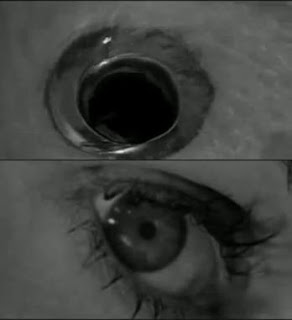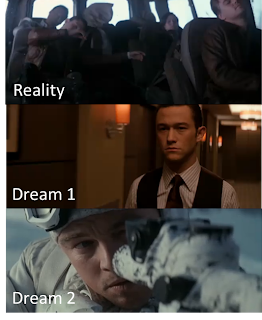-Cutting. Is the process where one shot is replaced on screen immediately by the next.
In this image we can see a perfect example of a cutting technique. There is a cut when the camera jump from a perspective to another.
-Shot/reverse shot. Cutting back and forth between people in a converrsation.
We can see in this picture a good example of a shot reverse shot technique. We can see how the the camera focus one person and then the other in middle of the conversation.
-Eyeline match. Cutting to show what a character is looking at. In this image we can see how thw woman is looking first the global perspective of the frame and then focus her eyes onto a special part of it.

-Graphic match. A similar shape or colour linking two consecutive shots.Is a cut in film editing between either two different objects, two different spaces, or two different compositions in which objects in the two shots graphically match, often helping to stablish a strong continuity of action and linking the two shots metaphorically.

-Action match. Cutting to show another angle of the scene. In this image we can see different angles of the same action scene and it is a wonderfull example of an action match.

-Jump cut. Cutting out the middle section of a shot. Is a cut in film editing in which two sequential shots pf the same subject are taken from camera positions that vary only slightly. This type of edit gives the effect of jumping forwards in time.
-Crosscutting. Cutting back and forth between two or more scenes happening simultaneously. Is an editing technique most often used in films to stablish action occurring at the same time in two different locations. In a cross-cut, the camera will cut away from one action to another action, which can suggest the simultaneityof these two actions but this is not always the case.

-Dissolve. One shot fades out as the next shot fades in. Is a gradual transition from one image to another.

-Fade out/fade in. The image fades out to a blank screen , or fades in from a blank screen.
-Superimposition. One image is placed on top of another image.
-Slow motion. Just what it says.
-Long take. A single continuous shot that does not cut for an unusual length of time(over a minute).
-Fast paced/slow paced editing. When the editing is fast paced the action will cut rapidly from shot to shot with each shot lasting only a few seconds. Slow paced editing will involve limited cutting from shot to shot.
No comments:
Post a Comment